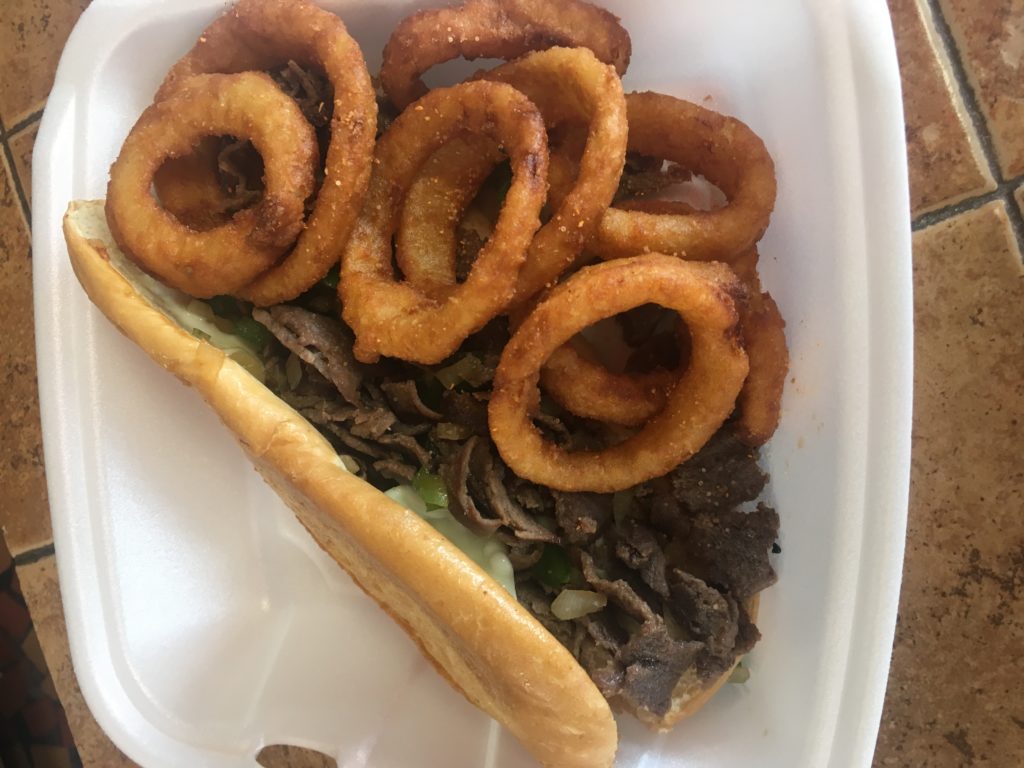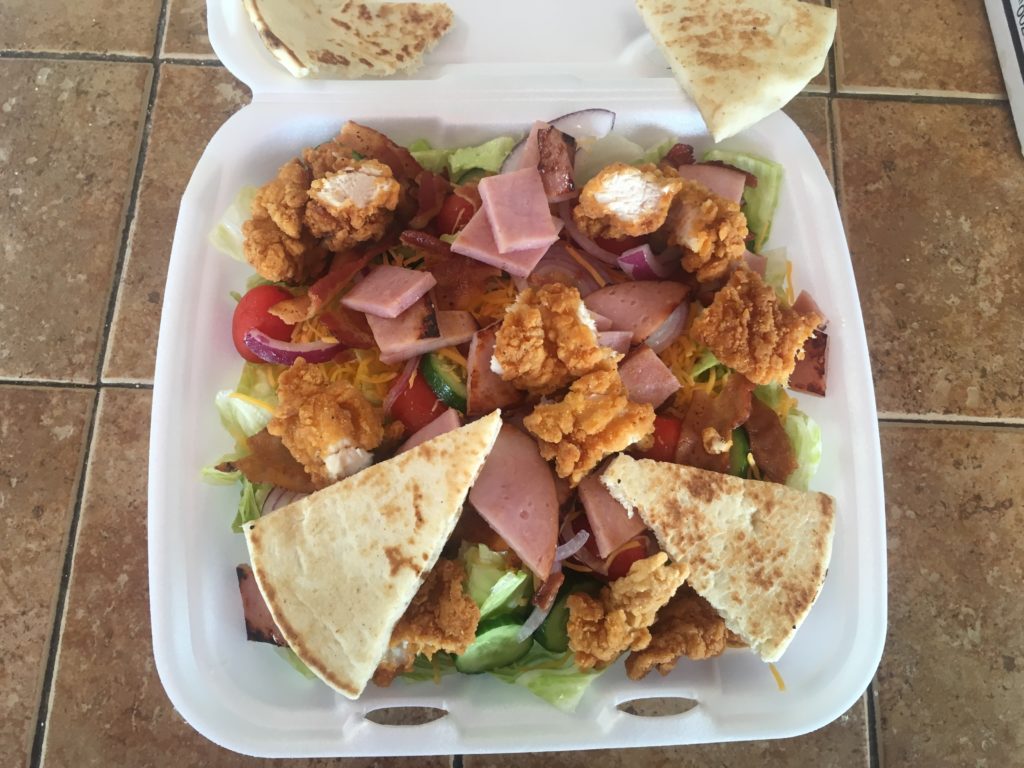Philly Cheese Steak
Philly Cheesesteak sandwich with Onion Rings. Very tender bun, easy to rip in two, and the cheese stretches when you do. Probably provolone.
The history of the Philly cheesesteak is a bit murky, but the most popular story is that it was invented by Pat and Harry Olivieri, two brothers who ran a hot dog stand near South Philadelphia’s Italian Market in the early 1930s. According to the story, one day a customer asked for a sandwich with some of the thinly sliced beef that the brothers were using to make their hot dogs. The brothers obliged, and the cheesesteak was born.
The Philly Cheese quickly became popular, and the Olivieri brothers opened a restaurant called Pat’s King of Steaks in 1933. Pat’s is still in business today, and it is one of the most popular cheesesteak restaurants in Philadelphia.
Another popular story about the origin of the cheesesteak is that it was invented by a man named Joe Fasano, who owned a restaurant called Manny’s Steaks in the late 1930s. According to this story, Fasano was inspired to create the sandwich after seeing a customer eating a hot dog with onions. Fasano decided to try grilling some beef and onions together, and he put the sandwich on a roll. The sandwich was a hit, and Manny’s Steaks became one of the most popular cheesesteak restaurants in Philadelphia.
No matter how you make it, a Philly cheesesteak is a delicious and satisfying sandwich that is sure to please. Here is a recipe for a classic the Philly Cheese:
Ingredients:
- 1 pound ribeye steak, thinly sliced
- 1 onion, chopped
- 1 tablespoon olive oil
- 1 teaspoon salt
- 1/2 teaspoon black pepper
- 8 slices provolone cheese
- 4 hoagie rolls, split
Instructions:
- Heat the olive oil in a large skillet over medium heat.
- Season the steak with salt and pepper.
- Add the steak to the skillet and cook for 3-4 minutes per side, or until browned and cooked through.
- Add the onions to the skillet and cook for 2-3 minutes, or until soft.
- Place the cheese on top of the steak and onions and let it melt.
- Place the steak and onions on the hoagie rolls and serve.
Where Philadelphian’s go for a Cheese Steak
- Pat’s King of Steaks: This is the place where the cheesesteak was invented, and it is still one of the most popular cheesesteak restaurants in Philadelphia. Pat’s is located at 1237 E Passyunk Ave, Philadelphia, PA 19147.
- Geno’s Steaks: Geno’s is Pat’s cross-street rival, and it is also one of the most popular cheesesteak restaurants in Philadelphia. Geno’s is located at 1219 S 9th St, Philadelphia, PA 19147.
- Jim’s South Street: Jim’s is a bit further away from the original cheesesteak locations, but it is still a popular spot for cheesesteaks. Jim’s is located at 450 S 4th St, Philadelphia, PA 19147.
- Dalessandro’s: Dalessandro’s is a bit of a hidden gem, but it is known for its delicious cheesesteaks. Dalessandro’s is located at 600 W Girard Ave, Philadelphia, PA 19122.
- John’s Roast Pork: John’s is not known for its cheesesteaks, but it does offer a delicious roast pork sandwich that is topped with cheese. John’s is located at 105 S 13th St, Philadelphia, PA 19107.
And of course the Olympic Flame Restaurant except that’s a long way from Philadelphia, because we are in Atlanta, Georgia on Marietta Boulevard near the Atlanta Ballet Carlos Dance Centre.



